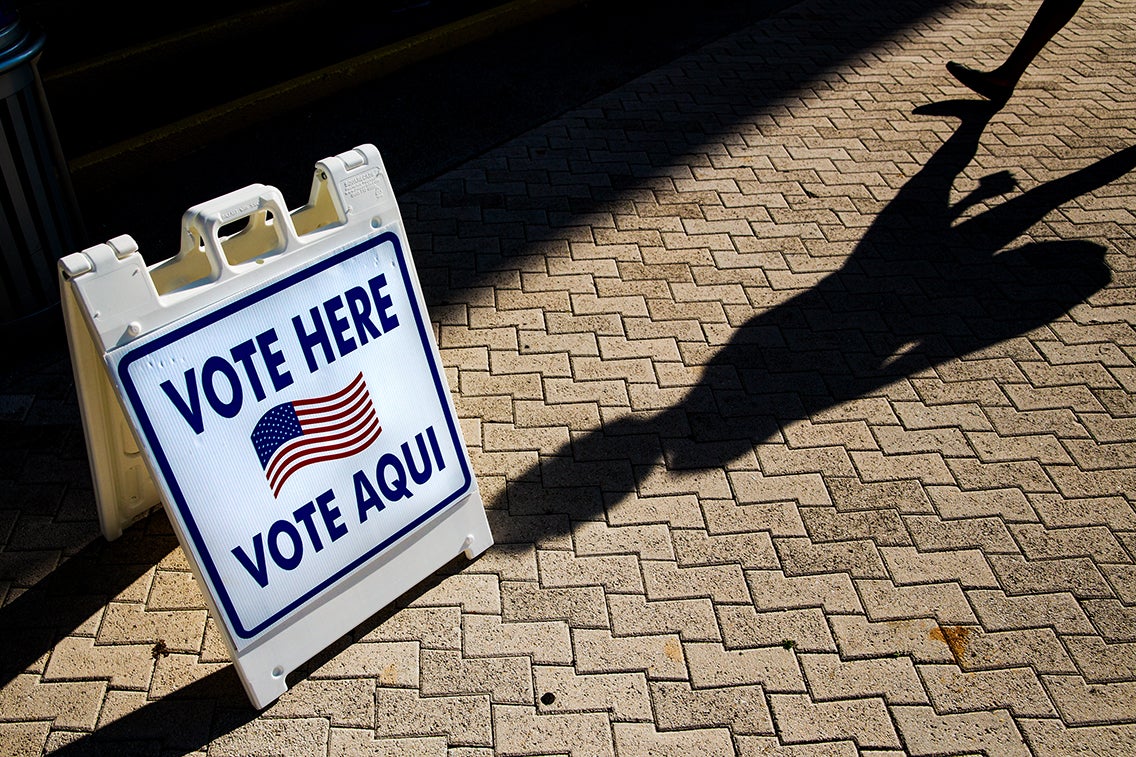
Hospitals and community health centers are cornerstones of our communities. At our clinics at AltaMed Health Services in Los Angeles and Orange counties and Stanford Medicine in the San Francisco Bay Area, we treat hundreds of thousands of people per year, many of whom are young, disabled, low-income and/or people of color. Far too many of the people we serve are disengaged in democracy, and because policy at all levels of government shapes our health, this has to change.
Recognizing this need, a growing number of U.S. health care providers are making voter engagement a routine aspect of clinical care to reduce health inequity. More than 300 institutions and 30,000 providers have added nonpartisan civic health to their checklist of ways to care for the whole person, with the hope that helping people vote can address long-standing health disparities. Making ballots more available can help people better advocate for their health needs, not just in voting for people who campaign on health-related issues such as clean air, better access to health care, and women’s or children’s health, but also for the social determinants of health—affordable housing, food security, environmental justice and disability accommodation. These social determinants account for up to 80 percent of health outcomes, and are equally critical to promoting both individual and public health.
Health systems are well-positioned to address these inequities, and federal legislation empowers them to do so. The National Voter Registration Act of 1993 and guidance from the Internal Revenue Service support nonprofit organizations—like many hospitals and clinics—in nonpartisan voter registration.
AltaMed is one of many examples. In the run-up to the 2022 primaries in California, AltaMed staff and people from local civic engagement organizations reached more 220,000 new and low-propensity Latino voters within a five-mile radius of all their clinic sites, despite usually low voter turnout in midterm compared with general elections. In 2018, as part of the AltaMed Get Out the Vote campaign, which involved hospital staff and our partner community health centers, we contacted nearly 30,000 Black and Latino voters in primarily Latino precincts. Every 1 percent of total voters contacted by AltaMed translated into an 8 percent increase in voter turnout between 2014 and 2018.
Individual health care providers are also bringing nonpartisan conversations about voting into their clinical practice. Professionals at more than 700 hospitals and clinics nationwide have helped both colleagues and their patients register to vote with tools from nonprofit partners like Vot-ER. They help people to register, without endorsing a political party, policy or candidate. The power then lies with the voter to choose who best represents them and use their own voice to advocate for their health.
The COVID pandemic exacerbated and highlighted how social determinants of health affect health outcomes, and it spurred health care–based efforts to increase voter turnout. In August 2020, nearly 100 health and democracy partners celebrated the first Civic Health Month to ensure that people could access voting resources and cast their ballots safely during the presidential election. This coalition has since grown to more than 300 partners, including the National Medical Association, a professional organization that represents physicians of African descent as well as people of African descent seeking medical care, Dana Farber Cancer Institute, American College of Obstetricians and Gynecologists, and the American Academy of Pediatrics. In addition, more than 80 medical schools participated in the Healthy Democracy Campaign, helping 15,692 people.
Vot-ER has reported that in 2020, institutions and providers used the organization’s tools to help more than 47,000 people initiate voter registration or request a mail-in ballot. Of that number, 84 percent of people who completed the registration process did so successfully, and of those who registered successfully, 85 percent voted in the general election. More people of color and young people voted after registering through Vot-ER than in the general electorate.
Major voices in health care have also taken action. In June, the American Medical Association passed a resolution affirming voting as a social determinant of health. The U.S. Department of Health and Human Services reestablished voting as a research objective in Healthy People 2030, the framework used to measure and improve health outcomes. The Association of American Medical Colleges also issued guidance encouraging teaching hospitals and medical schools to support voter access in their communities.
At a time when U.S. life expectancy has hit the largest two-year decline in nearly a century, one of the most fundamental ways to ensure that policy improves health is to ensure people vote. Regardless of the candidates or offices up for election, our health is always on the ballot. From the national level to the individual health care worker, we need to continue taking action that underscores voting and health as part of the same conversation—one that encourages our colleagues and patients to advocate for themselves and to vote like our health depends on it, because it does.
This is an opinion and analysis article, and the views expressed by the author or authors are not necessarily those of Scientific American.
